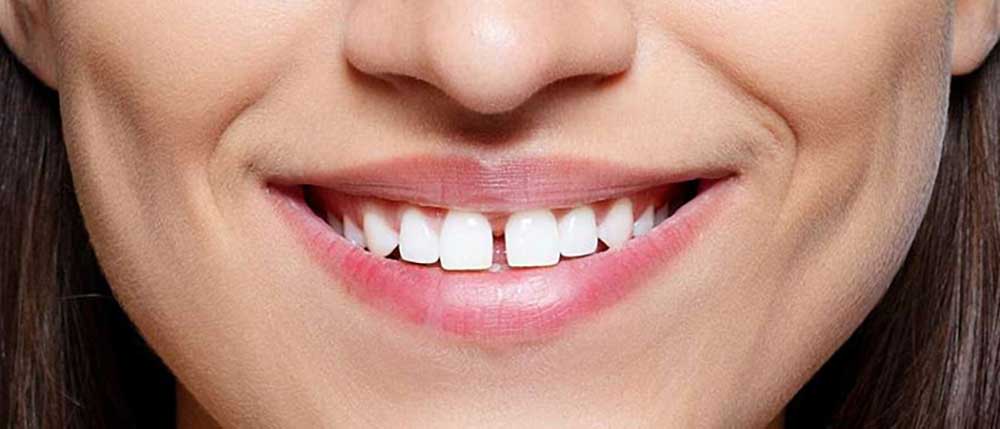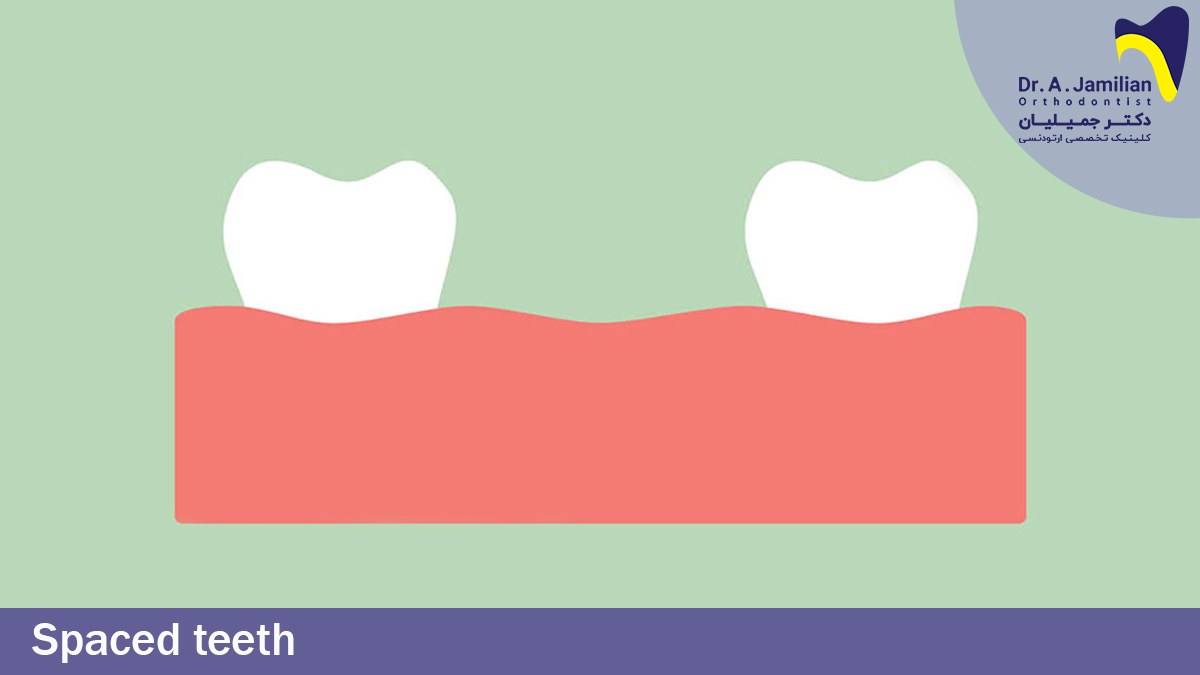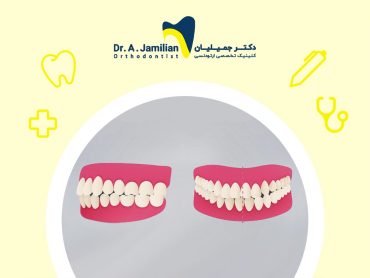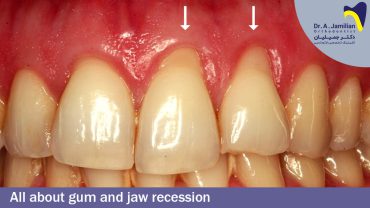
Spaced teeth is a common malformation where the big jaw and small teeth are often inherited from the father and mother, respectively. Spaced teeth are arising from the small size of the teeth and the extra space in the dental arches. Other factors including one or multiple hidden teeth, one or multiple missing teeth, protrusion of the anterior teeth and an enlarged tongue play a role in this malformation. Spaced teeth cause gingival recession, dental plaque, food stuck between the teeth, reduced teeth function, and lack of beauty that needs treatment. Spaced teeth are commonly treated with fixed orthodontics, however, these problems must first be corrected certainly before puberty in case of jaw problems. With the space between the teeth being treated with fixed orthodontics. Spaced teeth may arise from one or two missing teeth in some patients which can be treated through two methods based on the patient’s conditions.
In the first method called Space Closure, the rear teeth are pushed forward and the front teeth are approached until the patient’s conditions permit. This is the best treatment method and is preferred in most cases. This is due to the fact that the space between teeth is filled with the patient’s own teeth, and there is no need for implants or foreign bodies. Otherwise, the missing teeth are replaced with implants. In most cases, the space closure method is preferred to close the missing space, but the final treatment plan is determined based on the patient’s conditions, presence or absence of teeth crowding, patient profile, tooth anterior protrusion and radiographic images.
Interdental Space Closure Procedures
You should pay a visit to an orthodontist for closing the interdental spaces. In orthodontics examination, the reason for interdental spaces is examined and diagnosed. Afterward, on the basis of the cause of the malocclusion, the suitable treatment procedure will then be suggested by the orthodontist.
This space is created out of bad habits, thus, the first step is to quit these habits. Interdental spaces will be closed by carrying out orthodontics and dentistry treatments.
Some patients have small spaces between their teeth. This type of malocclusion could be treated with fixed orthodontics as well as removable orthodontics, such as Invisalign. Adults with small interdental space prefer Invisalign Orthodontics. Because, this type of orthodontics is not noticeable and causes no problem in their daily social activities. The patient can take out the invisible removable orthodontics anytime necessary and put it back in the mouth. Note that using removable orthodontics regularly reduces the course of orthodontics treatment. Using removable orthodontics regularly means that you should wear an orthodontics appliance round the clock and only take it out during eating and drinking.

The second and faster procedure is using fixed orthodontics. Fixed orthodontics is permanently placed on the teeth and the patient’s teeth are under continuous pressure. Therefore, the course of treatment by the fixed orthodontics is much faster and more consistent. Paying a regular visit to your orthodontist accelerates the course of treatment. In case of having small interdental spaces, the course of orthodontics treatment and closing the interdental space will amount to an approximate 6 months.
Sometimes the interdental space is wider. These patients have lost one or more teeth. For patients with severe interdental space, orthodontists carry out both orthodontics treatment and inserting teeth. In this procedure, the interdental space is adjusted using orthodontics and space is opened for inserting the teeth. Then, the orthodontist inserts the teeth in the appropriate location and closes the interdental space. In the cases that the interdental space is caused by impacted tooth malocclusion, closing the space is carried out by the fixed orthodontics treatment.
Interdental Space Closure Don’ts
Sometimes patients ask for one-session interdental space closure treatments. In this procedure, the dentist reduces natural and healthy teeth and makes teeth larger using laminate or veneers. By making teeth larger, the interdental space will be closed. Although, this treatment has two fundamental problems:
- In order to apply the veneer and laminate on the teeth, the dentist has to reduce the healthy enamel of teeth. The patient will need to have these materials replaced or trimmed off, this is caused because the material has a limited lifespan. Although, the patient carried out the one-session treatment in order to save time. In the future, patients will have to spend more money and time. In addition, the patient has lost their healthy and natural teeth and could never restore them to their original state.
- Carrying out teeth enlargement without considering the situation of face and jaw skeleton, can result in facial asymmetry.
Frequently Asked Questions on Diastema
The best technique to treat diastema (i.e., closing the gap between the teeth) is orthodontics. It is the most ideal offer for people who decide to align their teeth.
Yes, genetic factors can determine the size of teeth and jawbone. For this, diastema can be passed down genetically.
The use of composite resins to close space between teeth entails special care at home. It stains teeth over time. The risk of discoloration is more with people who consume more coffee, tea, colored juices, or tobacco products. Moreover, the presence of composite resins destroys the gums and jawbone within a few years.
Orthodontic brackets help bring teeth closer together. Using this technique, the space between the teeth can be closed easily and without any risk.
Diastema is able to cause problems such as: the enhanced occurrence of gum disease, improper smile style, appearance problems, and improper functioning of the teeth.


